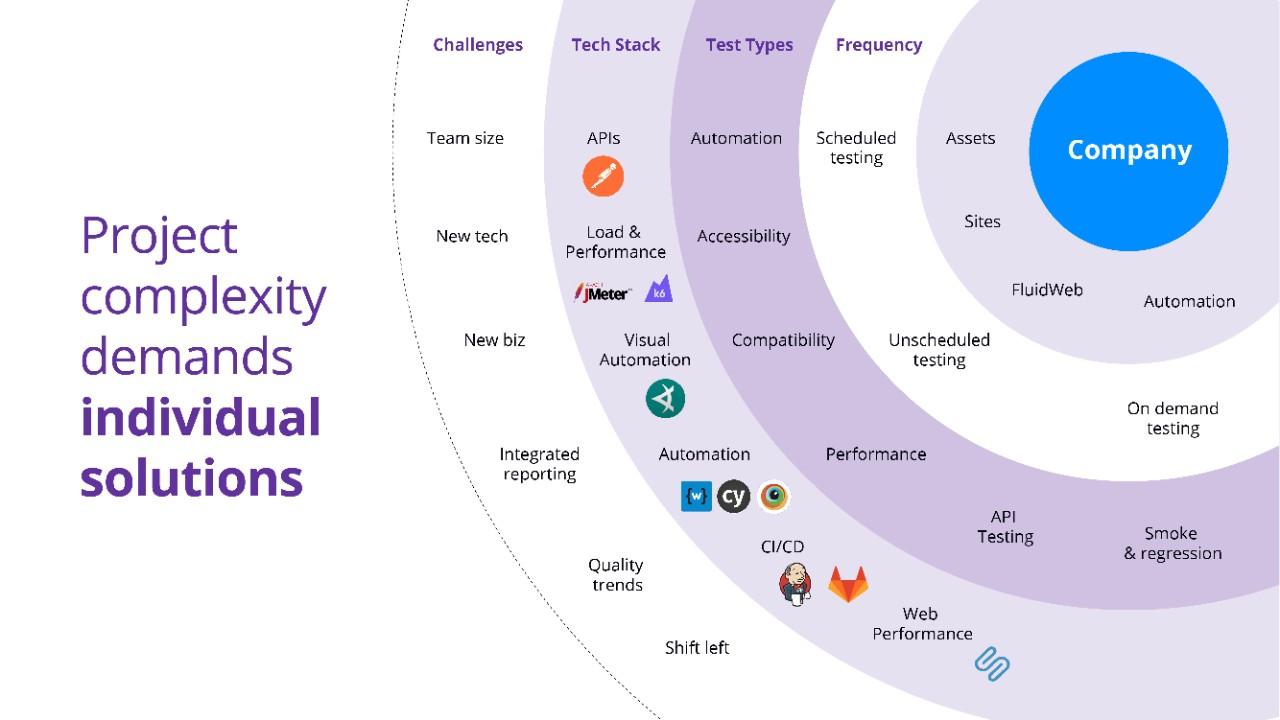How to scale quality with a 360° QA ecosystem

Quality assurance, or QA, is the key to ensuring consistently excellent quality in the products and services you deliver to customers. The responsibility of the QA team is to take a proactive approach towards preventing defects in the software. They do this by defining, documenting, and implementing the guidelines and processes to ensure that the final product delivers consistent and satisfactory results.
This article will dive into our reimagined approach to Quality Assurance Operations (QA Ops), continuously integrating quality at every step of the development process. You’ll also see an example of how we designed QA solutions for a global manufacturing company.
What are Quality Assurance Operations?
Traditionally, QA was a discrete function often coming in towards the end of the development process to identify issues for the development team to fix before shipping the software. QA Ops combines the principles of IT and DevOps to create a 360° QA ecosystem where there is more focus on quality, and the entire team is enabled to contribute towards it.
This includes shift left testing, which considers quality early in development and helps to un-silo QA from the rest of the development process; scaling by automating parallel testing; and reporting, which integrates QA with continuous deployment and democratizes test results so that the development team is responsible for quality as a collaborative effort.
What are the challenges in designing QA solutions?
Before designing a robust QA solution, it’s important to consider existing challenges and constraints.
- Lack of resources – QA teams are often lean; it’s not uncommon for only a handful of team members to be responsible for the QA of a global organization. Allocating these limited resources strategically and leveraging automated and parallel testing is crucial.
- Implementing new tech and tools – New technologies and frameworks are developing rapidly in this emerging field. In 2021, we expect the use of AI and machine learning to increase significantly, helping organizations increase overall coverage and efficiency while reducing human error through automation.
- Democratizing test results – To un-silo QA and invite collaboration from every part of the team, we need to develop integrated reporting to democratize test results and make them accessible to every member of the team.
Analyzing quality trends – QA shouldn’t stop at fixing software defects at the moment. A sound QA strategy should include using historical data to improve the product over the long term.
The Netcentric approach
Recently, we took on the challenge of designing custom QA solutions for a global manufacturing company. In complex environments, we begin by scoping the phase of the project and defining the end goal, then work our way outwards to set up the test cycles and toolkits that make sense for the project.

We began by selecting the test frequency (scheduled, unscheduled, or on-demand), followed by the types of tests to perform: automation, accessibility, compatibility, performance, API testing, or smoke & regression. This then helps us determine which tech stack to use. For example, since load and performance testing was one of our priorities, we employed specialized tools like K6.io, Amazon Elastic Cluster Service (ECS), Terraform, and Cloudwatch. We are continually expanding our technology stack with new tools to meet the evolving needs of our clients.
Discover Netcentric and the power of a quality-centered approach
When it comes to delivering quality, it’s not just about delivering excellence, but the consistency that your customers can rely on. This is why businesses need to operationalize QA and integrate it throughout the development process.
Our holistic approach to QA enables us to cover more ground in parallel, democratizing the QA process and results even with limited resources. Hence, quality is something that the entire team can take ownership of.
Reach out to our team to learn more about how Netcentric can help make quality the core of your product development strategy and designing bespoke solutions for your organization’s needs.